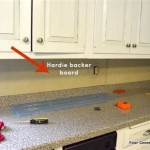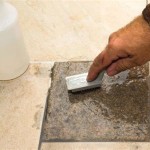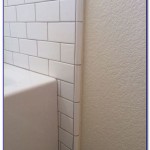Can You Put Luxury Vinyl On Top Of Ceramic Tile? A Comprehensive Guide
The question of whether luxury vinyl flooring (LVF) can be installed over existing ceramic tile is a common one for homeowners considering renovation projects. The answer is generally yes, but with several crucial considerations. Successfully installing LVF over ceramic tile requires careful preparation and adherence to best practices to ensure a durable, aesthetically pleasing, and long-lasting floor. Ignoring these factors can lead to issues such as unevenness, telegraphing of grout lines, and premature wear of the luxury vinyl.
Luxury vinyl flooring comes in various forms, including planks, tiles, and sheets. Each type offers unique benefits and installation requirements. Understanding the specific characteristics of the chosen LVF product is paramount before proceeding with installation over ceramic tile. Furthermore, the condition of the existing ceramic tile floor plays a significant role in determining the suitability for overlayment with LVF.
Evaluating the Existing Ceramic Tile Floor
Prior to any installation, a thorough assessment of the existing ceramic tile floor is necessary. This evaluation should focus on several key aspects. First, the stability of the tiles must be verified. Any loose, cracked, or damaged tiles must be addressed. Loose tiles should be re-secured, and cracked tiles ideally replaced. If widespread damage exists, removing the entire ceramic tile floor might be the more prudent option.
Second, the levelness of the ceramic tile floor should be assessed. Significant variations in height between individual tiles can telegraph through the LVF, resulting in an uneven and potentially uncomfortable surface. Minor imperfections can often be addressed with leveling compounds, but more substantial unevenness may necessitate more extensive preparation.
Third, the cleanliness of the ceramic tile is crucial. The surface must be free from dirt, grease, wax, and any other contaminants that could interfere with the adhesion of the LVF. Thorough cleaning with a suitable cleaning agent is essential.
Finally, the grout lines between the ceramic tiles are a critical consideration. The depth and width of the grout lines can significantly impact the final appearance of the LVF. Deeper and wider grout lines are more likely to telegraph through the LVF, creating visible and potentially tactile imperfections. Addressing these grout lines is a key step in preparing the surface for LVF installation.
Preparing the Ceramic Tile Surface for Luxury Vinyl
Once the existing ceramic tile floor has been thoroughly evaluated, the next step is to prepare the surface for the installation of the luxury vinyl flooring. This preparation is crucial for ensuring a smooth, even, and durable finished floor.
One of the most important aspects of surface preparation is addressing the grout lines. There are several methods for achieving this. One option is to fill the grout lines with a cement-based patching compound or self-leveling compound. This creates a smooth, continuous surface that minimizes the risk of telegraphing. The chosen compound should be compatible with both ceramic tile and luxury vinyl adhesives. It is crucial to allow the patching compound to fully cure according to the manufacturer's instructions before proceeding with the LVF installation.
Another method involves applying a skim coat of self-leveling compound over the entire ceramic tile floor. This technique is particularly useful when the floor is uneven or when there are numerous small imperfections beyond the grout lines. The self-leveling compound effectively creates a new, perfectly level surface for the LVF to adhere to. Proper application of self-leveling compound requires careful attention to the manufacturer's instructions, including priming the ceramic tile surface and controlling the flow and thickness of the compound.
In some cases, a specialized underlayment can be used to minimize the impact of grout lines. These underlayments are typically made of resilient materials that help to absorb minor imperfections and provide a smoother surface for the LVF. However, the use of underlayment may not completely eliminate the risk of telegraphing, especially with deeper grout lines. It's always recommended to combine the underlayment with grout line filling for optimal results. The type of underlayment used should be compatible with luxury vinyl flooring and recommended by the LVF manufacturer.
After addressing the grout lines and unevenness, the ceramic tile surface should be thoroughly cleaned again to remove any dust or debris. A primer compatible with both the ceramic tile and the LVF adhesive may be necessary to enhance adhesion. Always follow the manufacturer's recommendations for priming, as improper priming can lead to adhesion failures.
Choosing the Right Luxury Vinyl Flooring and Adhesive
Selecting the appropriate luxury vinyl flooring and adhesive is critical for a successful installation over ceramic tile. Not all LVF products are created equal, and some are better suited for this type of application than others.
The thickness of the LVF is an important consideration. Thicker LVF products tend to be more resistant to telegraphing and may provide a more comfortable feel underfoot. However, thicker LVF can also be more expensive. Consider the level of traffic expected on the floor. Areas with heavy foot traffic benefit from thicker, more durable LVF options. The wear layer, which is the top protective layer of the LVF, is another factor to consider. A thicker wear layer provides greater resistance to scratches, scuffs, and stains.
The type of LVF is also a key factor. Luxury vinyl planks (LVP) and luxury vinyl tiles (LVT) are popular choices for residential applications. Sheet vinyl offers a seamless surface but can be more challenging to install. Choose a product specifically designed for glue-down installation if that is your preferred method. Click-lock or floating LVF can also be installed over ceramic tile, but it's essential to ensure that the subfloor is adequately prepared and level to prevent movement and instability.
Selecting the right adhesive is equally important. The adhesive should be compatible with both the ceramic tile and the chosen LVF product. It's crucial to use an adhesive recommended by the LVF manufacturer. Applying the adhesive correctly is also vital. Follow the manufacturer's instructions regarding spread rate, open time, and working time. Using the wrong adhesive or applying it improperly can lead to adhesion failures, resulting in the LVF lifting or peeling from the ceramic tile floor.
When choosing an adhesive, consider factors such as moisture resistance and VOC emissions. If the ceramic tile floor is located in a high-moisture area, such as a bathroom or laundry room, a moisture-resistant adhesive is essential. Low-VOC adhesives are preferable for indoor air quality, minimizing the release of harmful chemicals.
In addition to the LVF and adhesive, consider the need for transition strips. These strips are used to transition between the LVF and other types of flooring, such as carpet or hardwood. Transition strips provide a smooth, safe transition and protect the edges of the LVF from damage. Choose transition strips that complement the style and color of the LVF.
Installation Techniques and Best Practices
Proper installation techniques are crucial for achieving a successful and long-lasting LVF floor over ceramic tile. Following best practices will minimize the risk of problems such as unevenness, telegraphing, and adhesion failures.
Start by carefully planning the layout of the LVF. Consider the direction of the planks or tiles and how they will align with the room's architecture. Proper planning can minimize the need for cutting and waste. It also ensures a visually appealing and balanced finished floor.
When installing glue-down LVF, apply the adhesive evenly to the prepared ceramic tile surface. Use the recommended trowel size and spread rate specified by the adhesive manufacturer. Allow the adhesive to tack up for the recommended open time before placing the LVF. This allows the adhesive to develop sufficient grab for a strong bond.
Carefully align each piece of LVF and press it firmly into the adhesive. Use a roller to ensure full contact between the LVF and the adhesive. Pay particular attention to the edges and corners, ensuring that they are securely bonded. Remove any excess adhesive immediately with a damp cloth.
For click-lock LVF, follow the manufacturer's instructions for connecting the planks or tiles. Ensure that the joints are properly engaged and that there are no gaps. Use a tapping block and mallet to gently tap the planks or tiles into place. Avoid using excessive force, as this can damage the locking mechanism.
Leave an expansion gap around the perimeter of the room. This gap allows the LVF to expand and contract with changes in temperature and humidity. The size of the expansion gap will vary depending on the LVF product and the size of the room. Cover the expansion gap with baseboards or trim to provide a finished look.
After installation, allow the adhesive to fully cure before placing furniture or heavy objects on the floor. Follow the manufacturer's recommendations for curing time. Protect the floor from damage during the curing process. Avoid walking on the floor with shoes that could scratch or dent the surface.
Regular maintenance is essential for preserving the appearance and longevity of the LVF floor. Sweep or vacuum the floor regularly to remove dirt and debris. Clean the floor with a damp mop and a pH-neutral cleaner specifically designed for luxury vinyl flooring. Avoid using abrasive cleaners or scouring pads, as these can damage the surface. Use mats or rugs in high-traffic areas to protect the floor from wear and tear. With proper installation and maintenance, a luxury vinyl floor installed over ceramic tile can provide years of beauty and durability.
Ultimately, putting luxury vinyl over ceramic tile is feasible, but success hinges on careful evaluation, meticulous preparation, and adherence to best practices in installation. Failure to address any of these elements risks compromising the quality and longevity of the new flooring. By prioritizing these factors, homeowners can achieve a beautiful and durable floor that meets their needs.

Installing Luxury Vinyl Over Existing Tiles Choices Flooring

Transform Your Home Installing Vinyl Flooring Over Ceramic Tiles City Wall And Floor

New Vinyl Plank Flooring Over Tile Table And Hearth

What Type Of Flooring Can You Install Over Ceramic Tile

How To Install Luxury Vinyl Plank Over Tile Flooring

New Vinyl Plank Flooring Over Tile Table And Hearth

New Vinyl Plank Flooring Over Tile Table And Hearth

New Vinyl Plank Flooring Over Tile Table And Hearth

How To Install Vinyl Plank Floors In A Bathroom Over Tile

Can You Install Luxury Vinyl Plank Over Tile Flooring Liquidators
Related Posts








